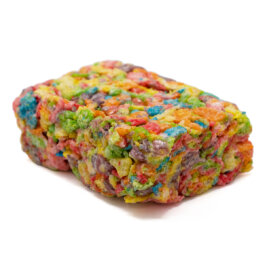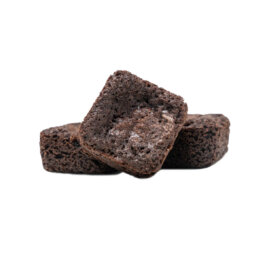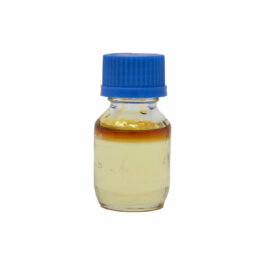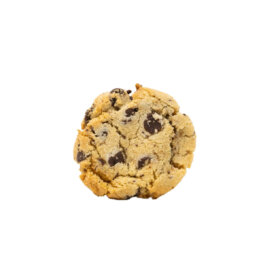No products in the cart.
When I was first approached about this topic, I can honestly say it was difficult to contain my excitement. I come from a very long line of musicians and have grown up around music my entire life. Within this topic, we are going to take a deep dive into the history of cannabis use with many more famous musicians than myself. How common is cannabis use among musicians? What effects might it have on the creation process? We’re going to look at each era of music throughout the decades and see what we can find.
1920s
The roaring 20s was certainly an interesting time to be alive. World War 1 was over, the stock market was at an all-time high, and while prohibition was just getting started, that didn’t stop the people from holding speakeasies and carrying bootleg alcohol to keep the party alive. During this time, some of the most popular music was Jazz, and many Jazz musicians were known to smoke cannabis. They would often use code words like reefer, tea, or grass since cannabis was beginning to be vilified throughout the country by nonsmokers. “Jazz Cigarette was another common word for a joint that several jazz players would smoke during performances. Cannabis helped the jazz era flourish, acting as a conduit for music production, creativity, and performances. It’s even commonly referenced in many songs, such as Cab Calloway’s “Reefer Man” and blues singer Trixie Smith’s “Jack, I’m Mellow,” and would continue throughout the 20s and into the 30s after the stock market crash leading into The Great Depression. Even Louis Armstrong, arguably the most famous jazz player of all time, was known to smoke a “Jazz Cigarette” before recording and during his performances. (On a side note, it’s believed that President Nixon, yes that Nixon, accidentally smuggled in cannabis for Armstrong after saying he didn’t have to go through customs) But throughout the 20s, 30s, and 40s, musicians used cannabis to feel more creativity and experiment with new rhythms and chord progressions, many of which are still very much influencing today’s music.
1950s
Because the 1920s through the 1940s were predominantly ruled by Jazz, Blues, and Swing, we’re gonna jump right into the 50s and the birth of rock n’ roll. The average person, when asked, “Who invented rock and roll?” 95% of the time, the answer you’re going to get is Elvis Presley, and while Elvis had a large impact on popularizing the genre, the true father of Rock is Mr.Chuck Berry. Now obviously, this is a huge statement to make, as many musicians were crucial in the invention of rock. However, Chuck Berry had the most profound impact on what would become “rock n’ roll.” Did Chuck Berry smoke pot? Well, that’s a little complicated. He denies it, but he is a well-known toker. He even got a strain named after him. But Berry’s not the only musician known for using the substance in rock n’ roll. Ask yourself, where would Rock be without Buddy Holly? Weezer might not even exist! But yes, Buddy Holly was a toker, and we love him for it. A couple more just to name a few; Little Richard, Sam Cooke, Bob Dylan, and James Brown. These are not the only smokers from the 50s, but think about where today’s music would be without their influence. Some of the greatest music ever recorded was thanks to the help of our little green friend.
The 60s and 70s
Now we come to quite possibly my all-time favorite era of music. The 60s and the 70s. A quick little disclaimer, the 60s, and 70s were known for MUCH more than just cannabis, but we’re not going to talk about those substances. In the 60s, we have Pink Floyd, Cream, Jimi Hendrix, Led Zeppelin, The Beatles, Black Sabbath, Bob Marley, The Doors, and the list goes on and on and on. One of the most transformative and important times in music history, all influenced by the blues and jazz of the previous decades. On August 15th, 1969, the music world changed forever. That day began the legendary Woodstock music festival. We’ve all seen the pictures and heard the stories, but I can only imagine what it was like to have been blessed by the legendary Jimi Hendrix, who opened Sunday morning with an electrifying rendition of the national anthem. Having had the pleasure of speaking with some of the attendees of this festival, one of the main things they talked about was the amount of cannabis present for the festival and how it made the experience that much more enjoyable as it allowed them to feel the rhythm of the music in ways they might not have otherwise.
1980s
With disco arriving at the end of the later 70s, the 80s brought big hair and even bigger music. One of the most predominantly successful genres of the 1980s was Glam Metal and Hair Metal. Bands like Motley Crue, Poison, Journey, Guns and Roses, Bon Jovi, and The Red Hot Chili Peppers in the 80s became massively popular. And with this, yes, lots and lots of cannabis use. One musician who regularly advocates for cannabis is Madonna, a huge popstar of the 80s who stated in an interview that she regularly uses cannabis recreationally and that it “fuels and enhances her creative process,” as is a common theme with musicians who partake.
The late 80s brought about a more controversial time in music with the birth of punk rock-inspired grunge. This genre rose to incredible heights in popularity in the 90s. You have the big four; Nirvana, Soundgarden, Alice in Chains, and Pearl Jam. These four bands inspired what has become modern-day rock. But you can’t leave out the bands such as Silverchair, Mudhoney, Bush, and Green Day, while their influence wasn’t as potent as the other four listed, their sounds can still be heard in a lot of today’s music. How do they feel about cannabis? Well, grunge is kind of known for its pot use. Layne Stayley, the iconic singer of Alice in Chains, regularly kept cannabis in their studio for use during recording sessions. Towards the end of the 90s into the early 2000s, Tennessee-based rock band Kings of Leon began writing their first album. In an interview in the “Talihina Sky” documentary, Caleb Followill said when they were writing the album, they got a pound of weed and locked themselves in their basement for a week. When they came out, they had written: “Youth and Young Manhood,” featuring songs such as; Red Morning Light, Holy Roller Novocaine, Molly’s Chambers, and Talihina Sky.
Conclusion
Cannabis has been used throughout history with the creation of music. It begs the question: Where would music be today without this fuzzy little, funky-smelling plant? As someone with a musical background, cannabis has always been a catalyst for ideas and for creating new sounds. On a personal note, I think without it, music would be just like any other robotically produced idea, following exact formulas and standard music theory, never branching out into the wild, unique ideas that we have today. Would Jimi ever have thought to play the national anthem the way he did? Would the Woodstock festival have even happened at all? What about Louis Armstrong? Would we still have the father of jazz if he didn’t smoke before every show? So much of the music we know and love today started as a simple idea one musician had during a smoke session, and for that, I say we give thanks to one of our favorite plants on this earth. This Jazz Cigarette is for you, Louis!
-
 Delta-8 THC Infused Cereal Treats 40mg$5.99
Delta-8 THC Infused Cereal Treats 40mg$5.99 -
 Delta-8 THC Infused Brownie Bites 65mg$7.99
Delta-8 THC Infused Brownie Bites 65mg$7.99 -
 Bulk Delta-8 THC Distillate$99.99 – $2,199.99
Bulk Delta-8 THC Distillate$99.99 – $2,199.99 -
 Delta-8 THC Infused Cookies (Two Pack) 40mg Each, 80mg Total$8.99 – $12.99
Delta-8 THC Infused Cookies (Two Pack) 40mg Each, 80mg Total$8.99 – $12.99